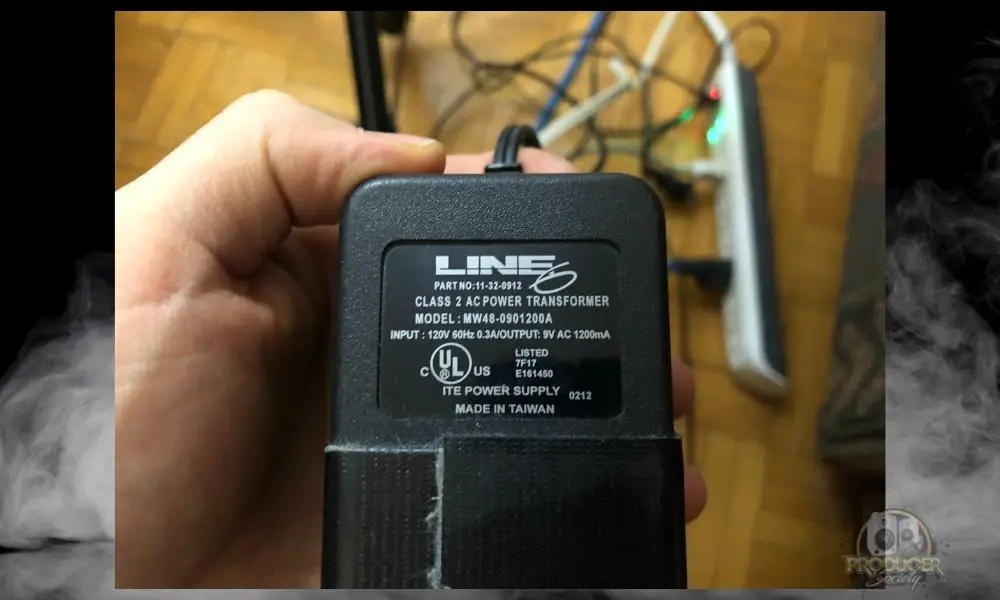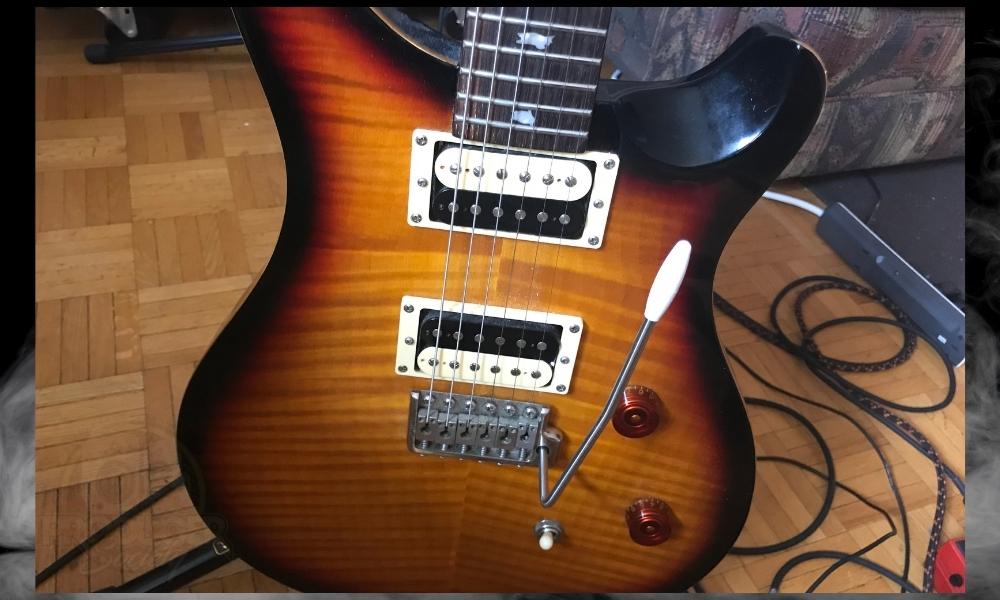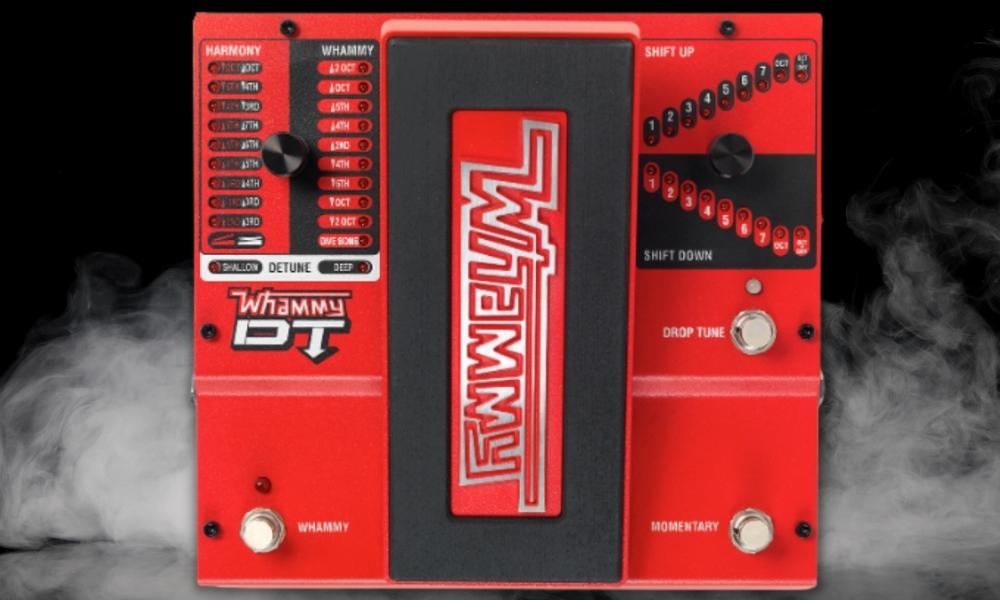DigiTech’s Whammy Pedal is a really cool effects unit that can imitate features of a classic vibrato and tremolo system like the Floyd Rose and Bigsby. For instance, the Whammy Pedal can imitate dive bombs fairly well, but still, the pedal and the bar are not the same.
For one, the Whammy pedal is entirely digital and controlled by foot, unlike the whammy bar which is hand-controlled and analog. It’s a harmonizing pitch-shifter whereas a tremolo system is a tool for vibrato, dive bombs, and tricks like flutters, a few of which can’t be done with the pedal.
As a matter of fact, there are a few things a tremolo/vibrato system can do that a Whammy pedal can’t. The same argument can be made vice-versa, however, where the two are similar, they’re still fundamentally different because of how they’re made. For the same reason, a tremolo system also sounds way different than a Whammy pedal.
The Differences Between A Whammy Pedal and Whammy Bar
| Whammy Pedal | Tremolo/Vibrato (Whammy) System |
| Digital (works like a computer) | Analog (uses kinetic energy) |
| Requires external power | Doesn’t require external power |
| It’s a guitar effects pedal | It’s a part of the guitar and is hand-controlled |
| Acts as a pitch-shifter, harmonizer, and also has the ability to drop tune (imitates bass and synths) | Only a pitch-shifter and a vibrato tool |
| Usually doesn’t require set-up and maintenance | It needs proper setup and maintenance because it uses actual mechanics and moving parts. |
| Sounds more digital | The vibrato and pitch-shifting sounds are very organic and authentic |
| Less precise over pitch-shifting features (Can’t perform vibrato, fast bar dips, or create slack string noises) | You can be very surgical with a tremolo/vibrato system (can do all of the whammy tricks) |
| Can pitch-shift by octave 1 and 2 octaves without using harmonics | A whammy bar can’t pitch-shift as drastically |
1) The Whammy Pedal Is A Digital Effects Pedal and the Whammy Bar Is Not
As I was saying earlier, the fundamental difference between a Whammy pedal and a whammy bar is that one is a digitally-based effects pedal, whereas the vibrato/tremolo system is not. The same thing goes for wah-wah vs whammy which I’ve also discussed.
The tremolo system is an analog system that bends vibrating and sound-producing strings. It’s not a computer program nor is it computer software inside of an effects pedal. One way of putting it is that it’s real.
Because the Whammy Pedal is essentially a computer program, it produces sounds via computers and electricity. Unlike a vibrato/tremolo system which creates sounds through actual kinetic energy, ie, objects in motion. As a result, pedals require power.
Whammy Pedals Require External Power

I won’t say much about this because it’s common sense, but ultimately, guitar pedals like the DigiTech Whammy – or any guitar pedal for that matter – need external power to operate. Because it’s digital, it needs a certain amount of power, all of the time to work.
While there are other guitar pedals that also need power, they use analog, traditional, circuitry, which means they can also use different kinds of batteries with different results (my article on that).
Obviously, there are other differences as a consequence of how they produce sound. For instance, whammy bars need proper set-up, components, and other work done to them to ensure they function properly whereas Whammy Pedals do not.
What Can The Tremolo/Vibrato Bar Do That The Whammy Cannot?
1) Flutters
If you check out the video right at 00:15, you can hear a style of vibrato that can only be done with a vibrato/tremolo system like a Floyd Rose or something similar. This effect can’t be done on a Whammy Pedal. It’s just not set up for that.
2) Ultra Fast Dips
Another thing that can’t be done on the Whammy Pedal that can be done on a vibrato/tremolo system are ultra-fast dips, to put it one way. You can hear this kind of thing in Pantera’s song, “Rise,” from Vulgar Display of Power, in the video shown above.
You can see Dimebag play it live like that video, or you can also check out the album version which sounds a lot better. Eddie Van Halen – who we’ll talk about in a minute – was the progenitor of the same tricks, although, Dimebag definitely had his own style.
3) Surgical Vibrato

Due to the nature of how a tremolo/vibrato system works, you have a lot more control over how much you’re depressing or pulling on the bar. As a result, you also have more control over how you shift the pitch of the note.
The Whammy Pedal doesn’t give you that kind of control because it’s done with your foot, and truthfully, I feel like the pedal doesn’t move as fluidly as it could. Although, it’s not really meant for this style of vibrato, so it’s not like it’s a flaw.
4) The Vibrato, Dips, and String Slack Noise Sounds Better
I don’t think there is anybody better at showing what a tremolo system can do than Eddie Van Halen. While he may have never invented any of the things that he did, a lot of the techniques and sounds he created in the way that he did were completely unique.
For instance, the video for “Eruption” which is shown above features many of the techniques that Van Halen used regularly that you can’t really do on a DigiTech Whammy pedal.
Dips, vibrato, slack string noise, and a few of the other things he does in the video are just not possible (in the same way) with the Whammy Pedal. The part at 04:06 is a good example of what I’m talking about. This guy does many solid demonstrations as well.
What Can The Whammy Pedal Do That The Bar Cannot?
1) Pitch Shifting By 1 and 2 Octaves
![Whammy on Whammy Pedal - How To Use A Digitech Whammy Pedal [The Ultimate Guide]](https://travelingguitarist.com/wp-content/uploads/2022/06/Whammy-on-Whammy-Pedal-How-To-Use-A-Digitech-Whammy-Pedal-The-Ultimate-Guide-1.jpg)
A standard tremolo/vibrato system can pitch-shift by 1 or 2 octaves, it can also drop by octaves, and do dive-bombs as well. However, the whammy pedal does it in a way that the bar can’t replicate and the same goes for vice versa.
For example, you can’t get the “Killing In the Name”-solo sound from Rage Against the Machine with a standard vibrato/tremolo bar. It just doesn’t work that way. However, you can’t manipulate or pitch-shift your guitar in an organic way like you can with the bar.
2) Instant Harmonies (3rds, 4ths, 5ths, Octaves, and More)
![Harmony on Whammy Pedal - How To Use A Digitech Whammy Pedal [The Ultimate Guide]](https://travelingguitarist.com/wp-content/uploads/2022/06/Harmony-on-Whammy-Pedal-How-To-Use-A-Digitech-Whammy-Pedal-The-Ultimate-Guide.jpg)
One of the cooler aspects of using the DigiTech Whammy Pedal is to instantly create octave harmonies. I find this is the best way to use the harmonic side of the pedal which is shown in the image above.
While a lot can be done with the other harmonization settings, they tend to sound more dissonant. As I said in my comprehensive guide on it, If you’re expecting to create Iron Maiden-style harmonies with the Whammy Pedal, you have to go elsewhere.
3) Detuning
Probably one of the most iconic uses of the DigiTech Whammy Pedal detuning effect was in the song shown above, “Seven Nation Army,” from The White Stripes. According to NME, Jack White uses a semi-acoustic guitar detuned by one octave with the pedal.
This produces the primary riff of the song which most people initially believed was just a bass guitar, despite the fact that part of what made the band special at the time was their omission of a bass player.
It’s important to note that you can go far beyond de-tuning by an octave if you’re using the Whammy Pedal Droptune.

The Droptune version of the pedal offers a lot more control over transposition features. This is incredibly useful if you’re the kind of player who regularly needs to switch between tunings.

Important Things to Note About Whammy Pedals and Bars
1) It’s Best To View The Pedal And Tremolo System As Separate Devices
Ultimately, it’s best to view the Whammy Pedal and standard tremolo/vibrato system as completely separate devices. While they can replicate or imitate each other in similar ways, they sound entirely different from each other.
The only similar effect the two share are dive bombs, but even in that case, the standard tremolo system is better at creating the sound in a way that’s organic and authentic.
The way I look at it, it’s best to have both. Why not use a guitar with a standard tremolo system and a Whammy pedal if you want it? People like Steve Vai have done that with great effect.

 Written By :
Written By :
